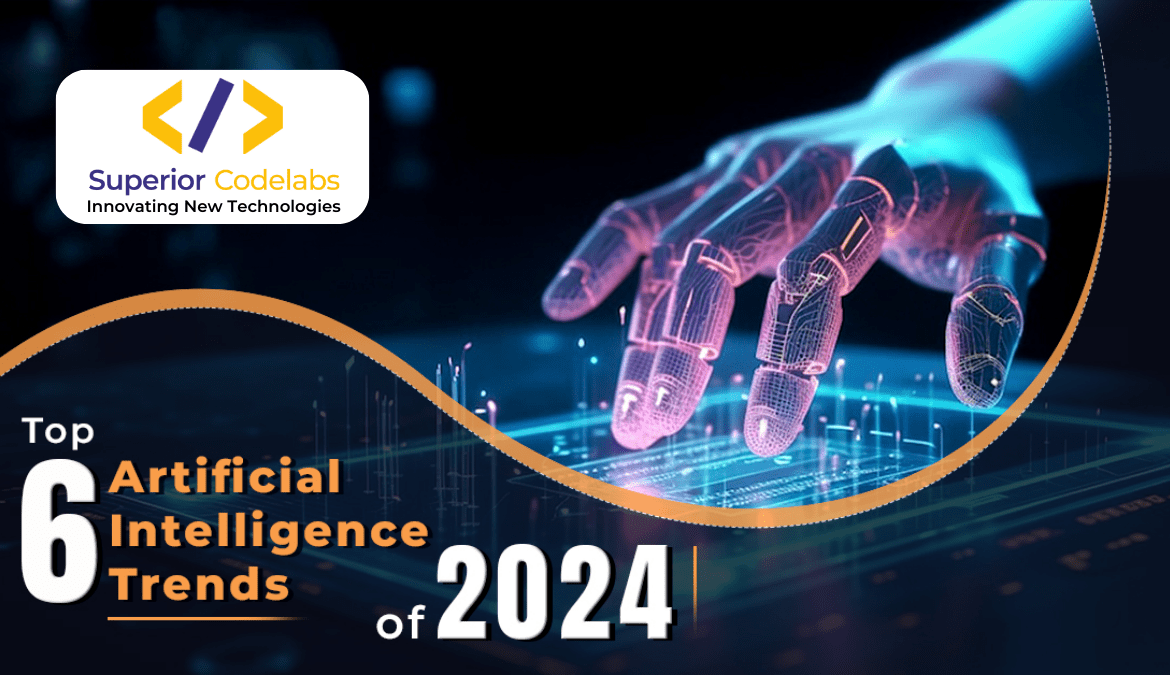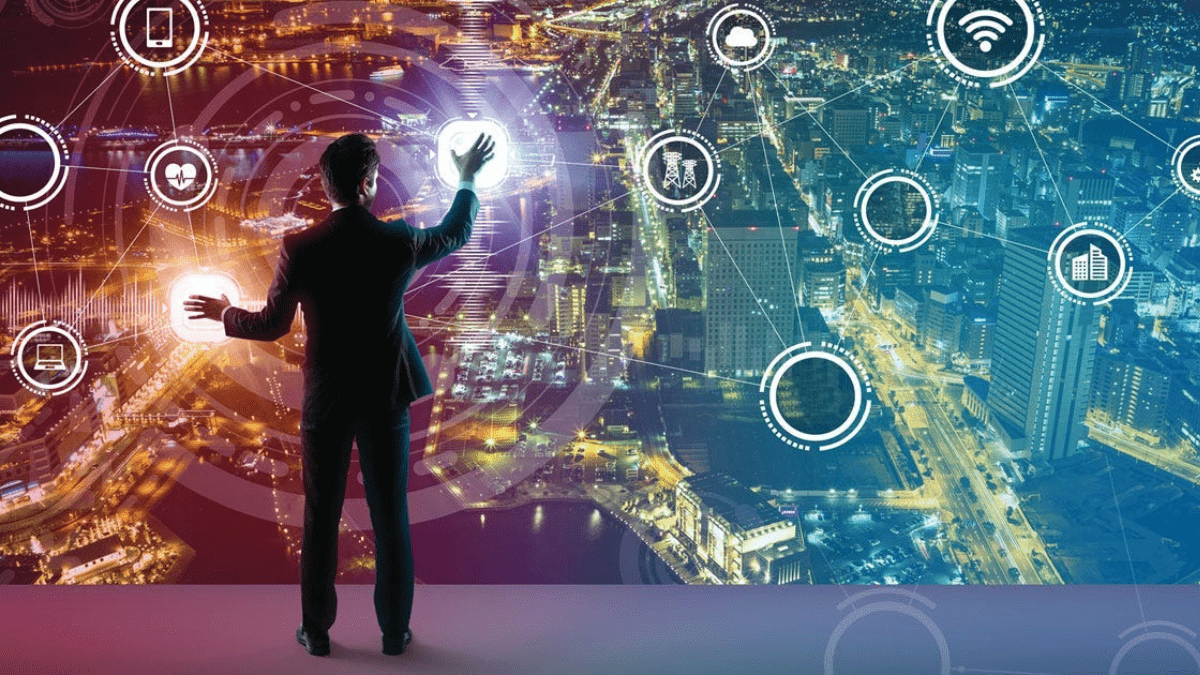In the ever-evolving landscape of artificial intelligence, 2024 promises to be a pivotal year marked by groundbreaking advancements and transformative shifts. From the widespread integration of AI in various industries to the emergence of cutting-edge technologies, the top 6 AI trends in 2024 are poised to redefine how we perceive and interact with this revolutionary field. As we delve into the intricacies of these trends, it becomes evident that AI is not just a tool but a dynamic force shaping the future across diverse sectors.
AI-Powered Personalization: Tailoring Experiences Like Never Before
The era of one-size-fits-all is officially behind us. In 2024, AI is taking personalization to unprecedented heights. Whether it’s personalized content recommendations, targeted advertising, or customized user interfaces, AI algorithms are becoming increasingly adept at understanding individual preferences and delivering tailored experiences. Businesses are leveraging this trend to enhance customer engagement and satisfaction, ultimately driving growth in their respective industries.
Quantum AI: The Marriage of Quantum Computing and Artificial Intelligence
Brace yourselves for the groundbreaking synergy of quantum computing and AI. Quantum AI is set to revolutionize computation, enabling machines to process vast amounts of data at speeds previously thought impossible. This trend holds immense potential for solving complex problems in fields like healthcare, finance, and logistics, paving the way for new discoveries and advancements that were once deemed unattainable.
Responsible AI: Ethical Considerations Take Center Stage
As AI becomes an integral part of our daily lives, the importance of ethical considerations cannot be overstated. In 2024, responsible AI practices are gaining prominence. From addressing bias in algorithms to ensuring transparency in decision-making processes, organizations are taking proactive measures to deploy AI in a manner that aligns with ethical standards. This trend reflects a growing commitment to building AI systems that benefit society while minimizing potential risks.
AI in Healthcare: Transforming Patient Care and Diagnosis
The healthcare industry is experiencing a paradigm shift with the integration of AI. In 2024, AI is playing a pivotal role in transforming patient care and diagnosis. From predictive analytics for early disease detection to personalized treatment plans, AI-driven solutions are enhancing the efficiency and accuracy of healthcare services. The result is improved patient outcomes and a more sustainable and responsive healthcare system.
Edge AI: Bringing Intelligence to the Edge of the Network
Edge AI is breaking barriers by bringing intelligence closer to the source of data generation. In 2024, we see a surge in the deployment of AI models on edge devices, enabling real-time processing and decision-making. This trend is particularly significant in applications like IoT devices, autonomous vehicles, and smart cities, where low latency and efficient resource utilization are paramount.
AI-Powered Cybersecurity: Fortifying Digital Defense
Cybersecurity is entering a new era with the infusion of AI. In 2024, organizations are leveraging AI-driven solutions to fortify their digital defense mechanisms. From anomaly detection and threat prediction to automated response systems, AI is proving to be a formidable ally in the ongoing battle against cyber threats. This trend reflects the proactive stance that businesses are taking to safeguard sensitive data and maintain the integrity of digital ecosystems.
Conversational AI: Redefining Human-Machine Interaction
The evolution of Conversational AI is reshaping the way we interact with machines. In 2024, natural language processing and understanding have reached new heights, enabling more intuitive and human-like conversations with AI-powered virtual assistants and chatbots. Businesses are leveraging this trend to enhance customer support, streamline communication, and create more seamless user experiences. The era of effortlessly conversing with AI is here, heralding a new era in human-machine interaction.
AI-Enhanced Creativity: Unleashing the Power of Creative Machines
Beyond traditional applications, AI is increasingly becoming a creative collaborator. In 2024, we witness the rise of AI-enhanced creativity, where machines assist and inspire artists, writers, and designers in their creative endeavors. From generating music compositions to aiding in graphic design, AI algorithms are proving to be valuable tools in unlocking new realms of human creativity. This trend not only boosts productivity but also challenges our perceptions of what is possible in the realm of artistic expression.
AI in Education: Personalized Learning for Every Student
The education sector is undergoing a transformation with the integration of AI. In 2024, AI is playing a pivotal role in personalized learning experiences. Adaptive learning platforms use AI algorithms to analyze students’ strengths and weaknesses, tailoring educational content to meet individual needs. This not only enhances the learning process but also provides educators with valuable insights to optimize teaching strategies. The result is a more engaging and effective educational environment for students of all ages.
AI and Augmented Reality (AR): Enhancing Real-world Experiences
The fusion of AI and Augmented Reality is creating immersive and enhanced real-world experiences. In 2024, we see applications ranging from AI-powered visual recognition in AR glasses to virtual shopping experiences that leverage AI-driven recommendations. This synergy is reshaping industries like retail, gaming, and tourism, offering users a seamless blend of virtual and physical worlds. The integration of AI and AR is opening new dimensions in how we perceive and interact with our surroundings.
AI Governance and Regulations: Navigating the Regulatory Landscape
With the rapid advancement of AI, governments and organizations are recognizing the need for clear governance and regulations. In 2024, we observe a concerted effort to establish ethical frameworks, guidelines, and legal standards to govern AI deployment. This trend reflects the collective commitment to ensuring responsible and transparent use of AI technologies, balancing innovation with ethical considerations and societal well-being.
AI Collaboration: Humans and Machines Working in Harmony
The future of work is characterized by collaboration between humans and machines. In 2024, AI is seen as a collaborative partner, automating routine tasks, enhancing decision-making processes, and enabling humans to focus on higher-order cognitive tasks. This collaborative approach is redefining job roles, fostering a more efficient and productive work environment, and highlighting the symbiotic relationship between humans and AI.
Conclusion
From advancements in machine learning and natural language processing to the ethical dimensions of AI implementation, this year unveils a tapestry of innovation that promises to redefine the boundaries of human-machine collaboration. As we navigate through the top 6 AI trends in 2024, it becomes evident that the intersection of cutting-edge research, practical applications, and ethical considerations will chart the course for a future where artificial intelligence plays an increasingly integral role in our daily lives.
Q1. What is Artificial Intelligence (AI)?
Artificial Intelligence refers to the development of computer systems that can perform tasks that typically require human intelligence. These tasks include learning, reasoning, problem-solving, understanding natural language, and perception. AI aims to create machines that can mimic cognitive functions and adapt to different situations.
Q2. How is Machine Learning different from AI?
Machine Learning (ML) is a subset of AI. While AI encompasses a broader range of concepts and techniques to enable machines to simulate human intelligence, Machine Learning specifically focuses on the development of algorithms that allow computers to learn from data. ML algorithms enable machines to improve their performance on a task over time without being explicitly programmed.
Q3. What are the ethical considerations in AI?
Ethical considerations in AI revolve around ensuring that the development and deployment of AI technologies adhere to moral principles and societal norms. Key issues include addressing bias in algorithms, ensuring transparency in decision-making processes, safeguarding privacy, and minimizing the potential negative impact of AI on employment and social structures.
Q4. How is AI being used in industries today?
AI is being widely used across various industries. In healthcare, AI assists in diagnostics, personalized treatment plans, and drug discovery. In finance, it aids in fraud detection, risk assessment, and algorithmic trading. Retail leverages AI for demand forecasting, customer personalization, and inventory management. Other applications include autonomous vehicles, virtual assistants, cybersecurity, and education, showcasing the versatility of AI in solving complex problems.
Q5. What is the future of AI and job displacement?
The future of AI and job displacement is a topic of ongoing debate. While AI has the potential to automate routine tasks, it also creates new opportunities and job roles. The key lies in upskilling the workforce to adapt to the changing job landscape. AI is expected to augment human capabilities, leading to the creation of new, more complex roles that require a combination of technical and soft skills.
For more information, visit Superior Codelabs.
Shaikh Fakruddin is the Founder and CEO of Superior Codelabs.





